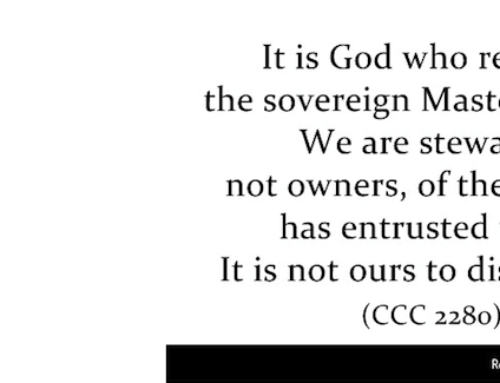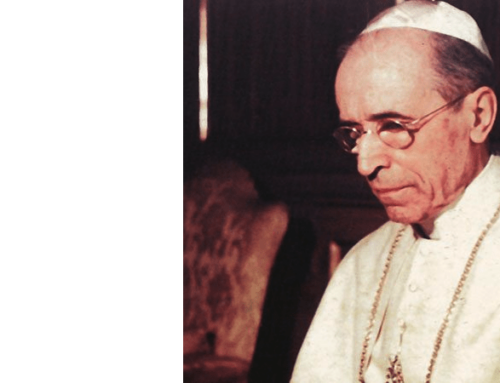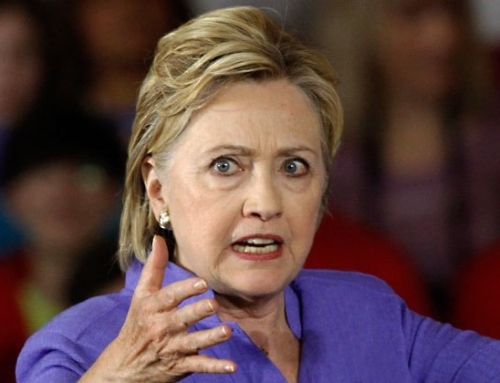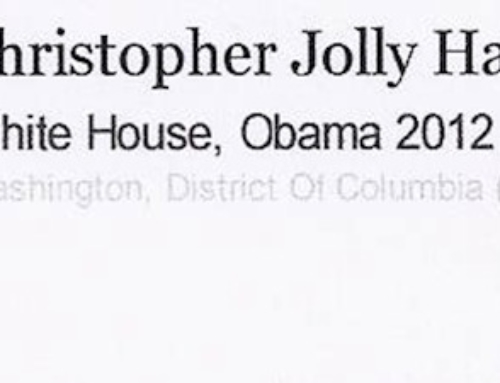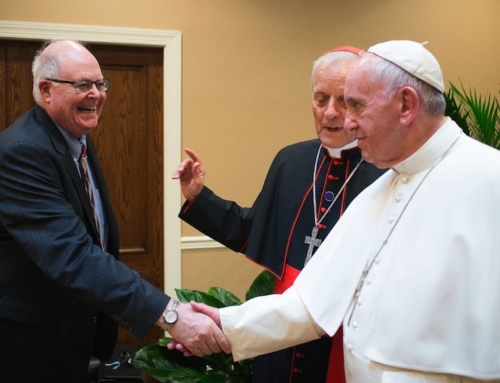by David L. Gregory
(Catalyst 12/2005)
The Right to be Wrong: Ending the Culture War Over Religion in America is the latest, and perhaps the most engaging and lucid, entry in the burgeoning “culture war” literature. But, unlike all of the others, this book proposes an interesting way to end hostilities.
The author of the book, Kevin (Seamus) Hasson, has been the Chairman of the Becket Fund for Religious Liberty since 1994. The Becket Fund is a stalwart ally of the Catholic League, defending the free expression and exercise of all religious traditions. Hasson, armed with graduate degrees in law and theology from Notre Dame, brings formidable scholarly insights, a superb litigator’s rhetorical eloquence and an obvious ability to tell engaging stories to this fine book.
Hasson writes with verve and tenacity; he tells remarkable stories in page-turning style. His tragic-comic metaphors of the “Pilgrims” (who believe that their religious truth requires them to suppress the free exercise rights of others) and the “Park Rangers” (who believe that all must remain silent in public, rather than make any claims about transcendent truth), are certain to become part of the constitutional law lexicon. Indeed, the first sentance of the book refers to Pilgrim/Park Ranger annual “trench warfare” and the inevitable flurry of litigation: “Every December some group is suing to take both the Nativity scene and the menorah off the courthouse steps.”
Deciphering the disastrous incoherence of what purports to be constitutional jurisprudence will not be made any easier in the wake of the decisions this past summer by the United States Supreme Court on the displays of the Ten Commandments. In two 5-4 decisions, with Justice Breyer the crucial swing vote in both cases, the Court allowed a six foot granite statue of the Ten Commandments on public land in Texas, but rejected as unconstitutional establishment of religion the posting of framed copies of the Ten Commandments in a Kentucky state courtroom. Decided in the Supreme Court’s building, complete with a frieze of the Ten Commandments, where the Court opens each session with the prayer that “God save the honorable Court,” and whose Chief Justice administers the oath to the newly elected President who vows “so help me God,” go figure.
It is not a conundrum that Kevin Hasson, or anyone else, I am afraid, is likely to solve any time soon. A possible preview of coming attractions may be the decision in 1999 by Judge Alito, now nominated to the United States Supreme Court. In American Civil Liberties Union v. Schundler, he wrote the majority opinion for the United States Court of Appeals for the Third Circuit, holding that a holiday display in Jersey City was not an unconstitutional establishment of religion because, in addition to the Nativity crèche and the menorah, Kwanzza, Frosty the Snowman and a banner proclaiming diversity were also present in the display at City Hall (thanks to the “Park Rangers!”)
In 1984, the Supreme Court endorsed a similar Park Ranger display in Pawtucket, Rhode Island. But in 1988 in Pittsburgh the crèche display was unconstitutional because it was displayed under a banner that proclaimed (that’s right, in Latin!) “Gloria in Excelsis Deo” (which was just too much for Justice O’Connor who cast the deciding vote of its obvious unconstitutionality.)
The Right to be Wrong is in the direct legacy of the pioneering scholarship of Judge John Noonan, the great jurisprudential champion of the free exercise of religion who taught for many years at the Notre Dame and Berkeley law schools before being appointed to the United States Court of Appeals for the Ninth Circuit by President Reagan. Likewise, the book continues in the tradition of the path-breaking The Naked Public Square: Religion and Democracy in America, written by Reverend Richard John Neuhaus in 1984.
Hasson, just as Noonan and Neuhaus, asserts that all religious traditions should be fully protected in the free exercise of religion, which will enrich and invigorate the life of the nation. By recognizing and protecting one another’s “right to be wrong,” all religious traditions, and the broader civic society, will more fully flower.
Extremists have dominated the terrain since the Pilgrims disembarked from the Mayflower. The Pilgrims, the first extremists, banned (or executed) religious dissenters, and imposed religious tests for public office. There are some heroes: Roger Williams, the founder of Rhode Island, and the Quaker conscientious objectors to the military draft, beginning with the Civil War, are prominently featured.
The first six chapters blend synoptic, crisp colonial era and early republican history with tragic-comic contemporary vignettes, illustrating the madness of the “Pilgrims versus the Park Rangers.” With the Orwellian ascendancy of the “Park Ranger” bureaucrats, Christmas and Hanukkah are replaced by the “holiday season,” Halloween becomes the “fall festival,” St. Valentine’s Day becomes “special person day,” and Easter is trumped by “special bunny day.”
Chapters seven through ten trace the evolution from tolerance to natural rights. Disestablishment in Virginia, the counterproductive Thomas Jefferson, and the compromised efforts of James Madison failing to make the individual states immediately and completely subject to the First Amendment are highlighted.
According to Hasson, tolerance has become intolerable, because, unfortunately, tolerance has been usurped by government bureaucracy. In the government’s hands, Hasson calls the notion of tolerance “a Rasputin of an idea.” Government arrogantly marginalizes and trivializes religious faith and practice, regarding tolerance of religion as a governmental prerogative rather than as, in fact, the fundamental right of the people.
The free exercise right in the First Amendment, according to Hasson, did not unequivocally apply to all of the states. Therefore, the states continued to deny rights to, and viciously persecuted, religious minorities. For many decades, Catholics and Jews were the special targets of persecution in many states.
Chapters 11 through 13 propose “authentic freedom.” Hasson examines the roots of religious liberty, grounded in universal truth—in God—rather than left to the contingencies and vagaries of government bureaucracy. Hasson implicitly invokes St. Augustine’s observation that we will be restless and thirsty unless and until we rest in God.
Hasson then directly states his proposed way out of the morass of the Pilgrims versus the Park Rangers. It is profoundly simple; we must allow all religions to operate without restraints and in the authentic pluralism that opens the public square to all faiths. When the free exercise rights of all religions operate, as Madison insightfully observed, it necessarily precludes the unconstitutional establishment of religion.
This respect for the conscience of everyone to practice their religion without any governmental interference, Hasson submits, is the solution to ending the culture war. He maintains that we can recognize everyone’s right to free exercise of their religion without compromising our own religious beliefs. Everyone will thus strenuously protect everyone else’s “right to be wrong.”
The book has many strengths. The legal history is concisely, cogently, and provocatively presented. It is extraordinarily well-written, and it is a pleasure to read. The descriptive aspects of the book are especially compelling. Hasson surely diagnoses the many difficulties caused by the Pilgrims and the Park Rangers throughout our history.
I doubt, however, that the book ultimately provides a workable, achievable agenda for ending the culture wars. That is a very tall order indeed. I fear that the culture wars are bound to continue unabated. To offer one example, the United States Senate Judiciary Committee has announced that it will not commence hearings on the confirmation of President Bush’s nominee to the United States Supreme Court, Judge Alito, until January 9, 2006. So for the next two months, the culture wars will be at fever pitch. Respecting the free exercise rights of all in the public square will, unfortunately, not prevent or resolve the cultural battle royale already commenced over the Alito nomination.
We are more diverse, but we are not necessarily more pluralistic. We may, alas, be even more brittle in our diversity, and more wary and suspicious of the other.
Harvard Professor Samuel Huntington wrote, more than a decade ago, the book that is becoming the classic book of the post-Cold War era—The Clash of Civilizations. His thesis was that Muslims in the West are an “indigestible minority.” Hasson takes a more optimistic view. He properly celebrates, for example, being taken seriously by Al-Jazeera TV (despite a call-in from “Mohammed from Mecca” who condemned him as an infidel) because he successfully defended the free exercise right of two Newark Police Officers, who were Sunni Muslims, to wear beards and to keep their jobs. “I had demonstrated respect for their consciences by successfully defending their rights. This, in turn, had won me a respectful hearing as to just why they should dialogue with this infidel rather than peremptorily wage jihad on me.”
Terrific. Unfortunately, Wall Street Journal reporter Danny Pearl, who also unfailingly treated Muslims with great respect, found that was no defense when Islamofascists brutally beheaded him.
While Kevin Hasson is an astute scholar and a terrific lawyer, he may underestimate the growing clash of civilizations—tellingly, the great book is not cited, let alone addressed, in The Right To Be Wrong. For the foreseeable future, the culture wars will continue to rage. The good news is that the intrepid Kevin Hasson and the Becket Fund will continue their important positive work undeterred. Perhaps in a subsequent volume, or, better yet, in a spring 2006 epilogue to the present book, and after the Alito nomination plays out, Hasson will be able to chart an even more compelling path out of the culture wars.


